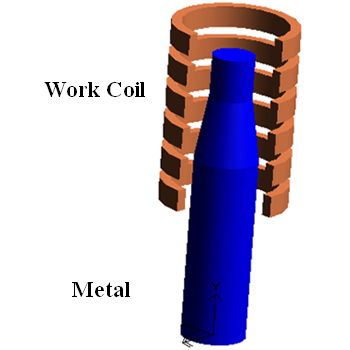Ever wonder how induction heating worked? Me too… Penguin Labs has an informative article about some of their experiments.
“Induction cookers, furnaces, stoves and all that jazz are now widely used. You put your metal saucepan on top of an innocent looking glass plate and it magically heats your food with no flame and almost no waste heat.
They are able to heat certain metals up to their melting points, and that is very hot, obviously…
How they work?
When an alternating electric current is passed through a coil, the coil creates a magnetic field. The magnetic lines of flux cut through the air around the coil. If a ferrous material, such a solid bar of iron is inserted into this coil, certain effects known as eddy currents are induced to flow in the metal bar. This causes localised heating, and ultimately heats up the metal bar.
A hexagonal screw in the red hot zone. Estimated at ~700 degrees C, from the colour of the steel.
Input frequency is ~300kHz for the coil. This seems to deliver maximum heating power.”


Permalink
This is a great demonstration. I can appreciate how hot it is given the glow. My first experience with inductive heating like this was years ago when I was adjusting the horizontal deflection coil in a monitor using a standard screwdriver. Each time I put the screwdriver in, the screen got very narrow, and I didn’t think much about where that energy was going. Eventually, I started smelling something hot, so like an idiot I brought the screwdriver up to my nose and burned myself before I realized how hot it had become. It wasn’t glowing, but I gained a real appreciation for inductive heating that day!
Permalink
Permalink
would a mot transformer running a small welder ransfromer in parralell ‘ mot secondary to welder
seconadry’ produce a high enough frequency to get a good induction heating result? i know it
does alternate and has a huge power out let ‘ good ‘ for the magnetic feild but im looking to
make a simple induction heater for annealing etc. thanks for your help would be much appreshiated.
Permalink
I’m looking for much more heat how can I generate a higher freqency.